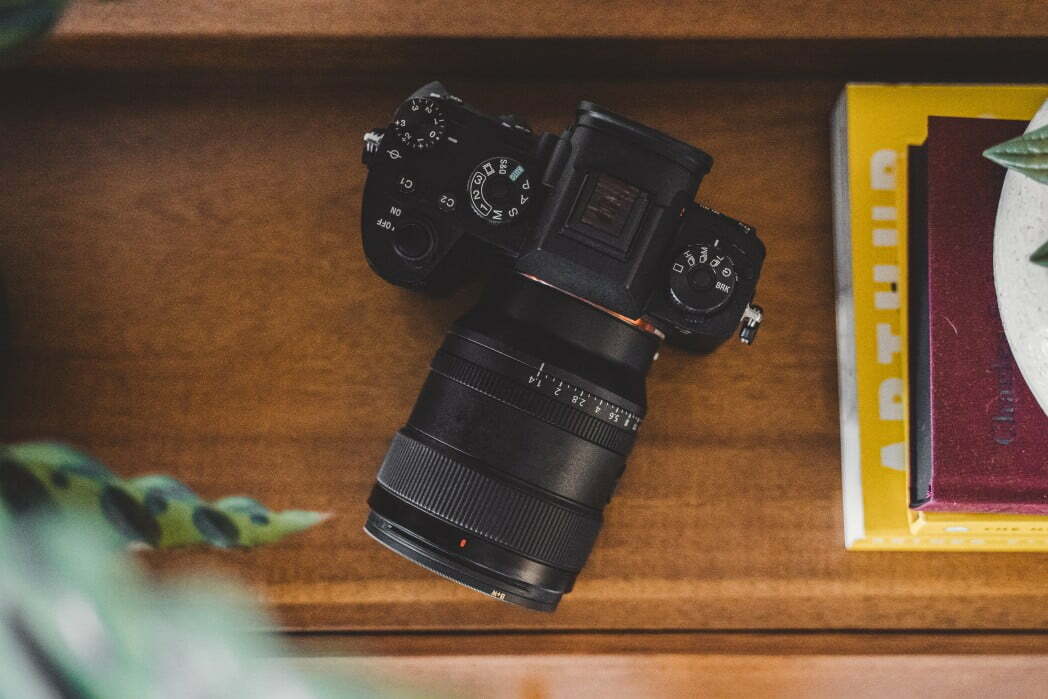If you are shopping for new camera lenses, you may be comparing 6 mm vs 8 mm on a digital camera. The best digital cameras, after all, allow for the use of multiple lens sizes. Keep reading to learn the differences between these two lens sizes.
KEY TAKEAWAYS:
- The size of the camera lens is measured in focal length, and the larger the focal length the better the field of view.
- Other things can be impacted by focal length, including depth of field and the type of shots that are appropriate.
- The difference between 6 mm and 8 mm is rather negligible, so you will likely not notice too much of a real-world difference.
Differences Between 6 mm and 8 mm Lenses
The lens is the eye of your camera and its focal length determines the field of view, how wide the camera can see, and even how far the camera can see. With that in mind, an 8 mm lens will offer a larger focal length than a 6 mm camera lens. It must be noted, however, that the noticeable difference between the two will be negligible, as camera lens focal lengths can go all the way up to 100 mm or even higher in some ultra-professional models. Just as when comparing digital camera image sensor size, the differences in image quality may be subtle.
Depth of Field
Generally speaking, the larger the lens, the better the depth of field provided by the camera. Of course, some digital cameras include software applications that can ape larger depths of field, but these functionalities can be limited when compared to the nuance of a large camera lens. With this in mind, an 8 mm camera lens will offer a larger depth of field than a 6 mm lens, though this difference will be subtle and may not even be noticeable in most photos, though wide-angle shots may be the exception.
Integration
Not all cameras can integrate with all lens sizes. In most cases, a modern DSLR camera will integrate with just about any lens out there, but the same cannot be said for compact cameras, point-and-shoot models, action cameras, and other types of digital cameras. Mirrorless cameras can swap out too many interchangeable lenses but may need an adapter to fit with some 8 mm or even 6 mm lenses. If you are wondering why your digital camera won’t record, it could be that you are using an incorrect lens, an incorrect film format, an incorrect sensor format, or the range of aperture sizes is incorrect.
Cost
Though the prices have evened out in recent years, smaller lenses tend to be cheaper than larger lenses. In other words, you will save a few bucks by going with a 6 mm lens over an 8 mm lens.
Insider Tip
Make sure your camera can swap out different lenses, purchasing an adapter if necessary.
F.A.Q.S
Can cameras swap out different cameras lenses?
You can swap out different lenses depending on what digital formats you intend to use, what camera you are using, and the sensor size.
Does the camera lens impact video formats?
The camera lens is incredibly important for both still shots and video, including Super 8 video with Super 8 film.
Does the physical size of a camera lens matter?
Yes, the physical size of the camera lens is called the focal length and it matters, though some mirrorless camera designs include small lenses that can impersonate larger focal lengths.
STAT: “The forerunner to the photographic camera was the camera obscura. Camera obscura (Latin for “dark room”) is the natural optical phenomenon that occurs when an image of a scene at the other side of a screen (or for instance a wall) is projected through a small hole in that screen and forms an inverted image (left to right and upside down) on a surface opposite to the opening.” (source)



































![Best Point and Shoot Camera in [year] ([month] Reviews) 27 Best Point and Shoot Camera in 2026 (January Reviews)](https://www.gadgetreview.dev/wp-content/uploads/Nikon-Coolpix-B500.jpg)
![Best Underwater Camera in [year] ([month] Reviews) 28 Best Underwater Camera in 2026 (January Reviews)](https://www.gadgetreview.dev/wp-content/uploads/best-underwater-camera-image.jpg)
![Best Digital Cameras in [year] ([month] Reviews) 29 Best Digital Cameras in 2026 (January Reviews)](https://www.gadgetreview.dev/wp-content/uploads/what-is-resolution-on-digital-camera-1.jpg)
![Best Digital Camera Docking Stations in [year] 30 Best Digital Camera Docking Stations in 2026](https://www.gadgetreview.dev/wp-content/uploads/best-digital-camera-docking-stations-image.jpg)
![Best Vlogging Camera in [year] ([month] Reviews) 31 Best Vlogging Camera in 2026 (January Reviews)](https://www.gadgetreview.dev/wp-content/uploads/best-vlogging-camera-image.jpg)
![Best Mirrorless Camera in [year] ([month] Reviews) 32 Best Mirrorless Camera in 2026 (January Reviews)](https://www.gadgetreview.dev/wp-content/uploads/best-mirrorless-camera-image.jpg)
![Best GoPro in [year] ([month] Reviews) 33 Best GoPro in 2026 (January Reviews)](https://www.gadgetreview.dev/wp-content/uploads/best-gopro-image.jpg)
![Best Digital Camera Tripods in [year] 34 Best Digital Camera Tripods in 2026](https://www.gadgetreview.dev/wp-content/uploads/best-digital-camera-tripods-image.jpg)
![Best Canon Digital Cameras in [year] 35 Best Canon Digital Cameras in 2026](https://www.gadgetreview.dev/wp-content/uploads/best-canon-digital-cameras-image.jpg)
![Best Polaroid Digital Cameras in [year] 36 Best Polaroid Digital Cameras in 2026](https://www.gadgetreview.dev/wp-content/uploads/best-polaroid-digital-cameras-image.jpg)
![Best Small Digital Camera Cases in [year] 37 Best Small Digital Camera Cases in 2026](https://www.gadgetreview.dev/wp-content/uploads/best-small-digital-camera-case-image.jpg)
![Best Digital Camera USB Cables in [year] 38 Best Digital Camera USB Cables in 2026](https://www.gadgetreview.dev/wp-content/uploads/best-digital-camera-usb-cable-image.jpg)
![Best Digital Camera Bags in [year] 39 Best Digital Camera Bags in 2026](https://www.gadgetreview.dev/wp-content/uploads/best-digital-camera-bag-image.jpg)
![Best Sony Digital Cameras in [year] 40 Best Sony Digital Cameras in 2026](https://www.gadgetreview.dev/wp-content/uploads/best-sony-digital-cameras-image.jpg)
![Best Panasonic Digital Cameras in [year] 41 Best Panasonic Digital Cameras in 2026](https://www.gadgetreview.dev/wp-content/uploads/best-panasonic-digital-cameras-image.jpg)
![Best Digital Camera Accessories in [year] 42 Best Digital Camera Accessories in 2026](https://www.gadgetreview.dev/wp-content/uploads/best-digital-camera-accessories-image.jpg)
![Best Kodak Digital Cameras in [year] 43 Best Kodak Digital Cameras in 2026](https://www.gadgetreview.dev/wp-content/uploads/best-kodak-digital-cameras-images.jpg)
![Best Video Cameras in [year] ([month] Reviews) 44 Best Video Cameras in 2026 (January Reviews)](https://www.gadgetreview.dev/wp-content/uploads/best-video-cameras-image.jpg)
![Best Compact Cameras in [year] 45 Best Compact Cameras in 2026](https://www.gadgetreview.dev/wp-content/uploads/best-compact-camera-image.jpg)
![Best Digital Cameras with Wifi in [year] 46 Best Digital Cameras with Wifi in 2026](https://www.gadgetreview.dev/wp-content/uploads/best-digital-camera-with-wifi-image.jpg)



















